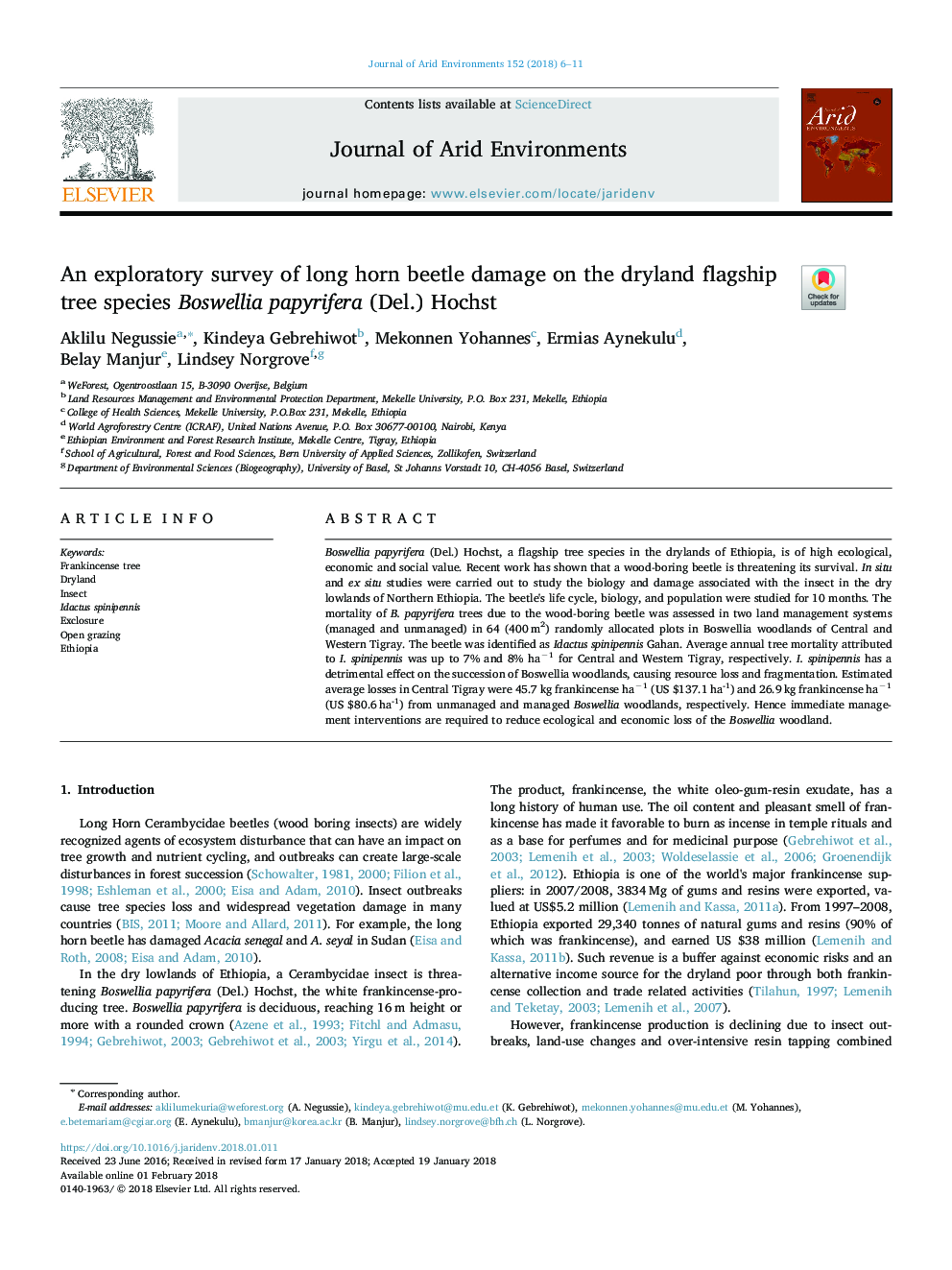| Article ID | Journal | Published Year | Pages | File Type |
|---|---|---|---|---|
| 8848518 | Journal of Arid Environments | 2018 | 6 Pages |
Abstract
Boswellia papyrifera (Del.) Hochst, a flagship tree species in the drylands of Ethiopia, is of high ecological, economic and social value. Recent work has shown that a wood-boring beetle is threatening its survival. In situ and ex situ studies were carried out to study the biology and damage associated with the insect in the dry lowlands of Northern Ethiopia. The beetle's life cycle, biology, and population were studied for 10 months. The mortality of B. papyrifera trees due to the wood-boring beetle was assessed in two land management systems (managed and unmanaged) in 64 (400â¯m2) randomly allocated plots in Boswellia woodlands of Central and Western Tigray. The beetle was identified as Idactus spinipennis Gahan. Average annual tree mortality attributed to I. spinipennis was up to 7% and 8% haâ1 for Central and Western Tigray, respectively. I. spinipennis has a detrimental effect on the succession of Boswellia woodlands, causing resource loss and fragmentation. Estimated average losses in Central Tigray were 45.7â¯kg frankincense haâ1 (US $137.1â¯ha-1) and 26.9â¯kg frankincense haâ1 (US $80.6â¯ha-1) from unmanaged and managed Boswellia woodlands, respectively. Hence immediate management interventions are required to reduce ecological and economic loss of the Boswellia woodland.
Related Topics
Physical Sciences and Engineering
Earth and Planetary Sciences
Earth-Surface Processes
Authors
Aklilu Negussie, Kindeya Gebrehiwot, Mekonnen Yohannes, Ermias Aynekulu, Belay Manjur, Lindsey Norgrove,
